ORIF - Plates without angular stability
1. Principles
Anatomical reduction
Partial articular split fractures are intraarticular, therefore they need an anatomical reduction and absolute stability.
The plate functions as a buttress plate. In osteoporotic bone consider the use of locking compression plates (LCP) which offer greater stability in osteoporotic bone.
Lateral versus medial condylar fractures
The operative procedures for lateral condylar fractures and medial condylar fractures are similar but have some differences.
In both the position of their respective buttress plates is governed by the direction of the fracture planes. However, on the lateral side because of the fibula, the buttress plate is always positioned antero-laterally and not laterally. If the main split-wedge fragment is either postero-lateral or postero-medial it has to be buttressed postero-laterally or postero-medially respectively. The postero-lateral buttress plate is best applied through a posterior transpopliteal approach. On the medial side, because one is not dealing with a fibula, the plate may come to lie antero-medially, postero-medially, or posteriorly.
A lateral condylar fracture is used here as an illustration.
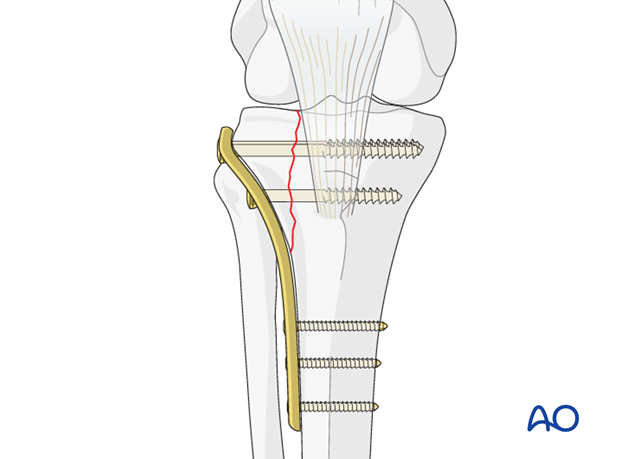
2. Patient preparation and approach
Patient preparation
This procedure is normally performed with the patient in a supine position.
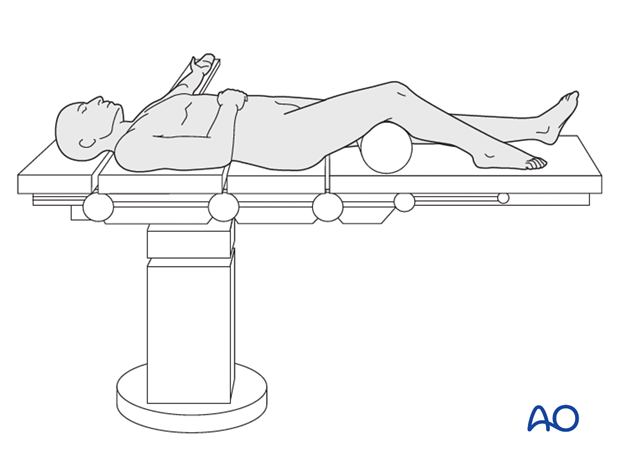
Approach
For this procedure an anterolateral approach is used.
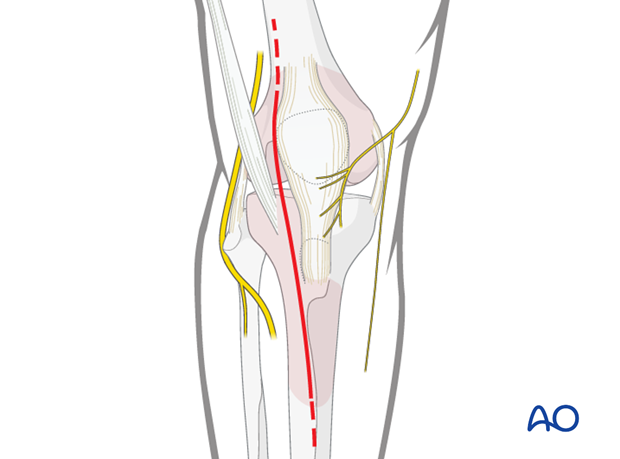
3. Reduction
Clamps
Indirect reduction may be attempted by percutaneous manipulation of the fractured fragment using a clamp. The reduction should be checked with an arthroscope if no arthrotomy is carried out because frequently the lateral meniscus is caught in a fracture line. In cases where adequate closed reduction is not achieved the joint must be opened to carry out an anatomical reduction.
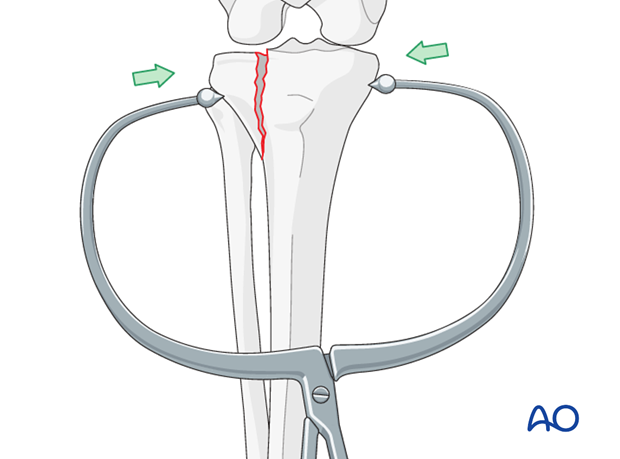
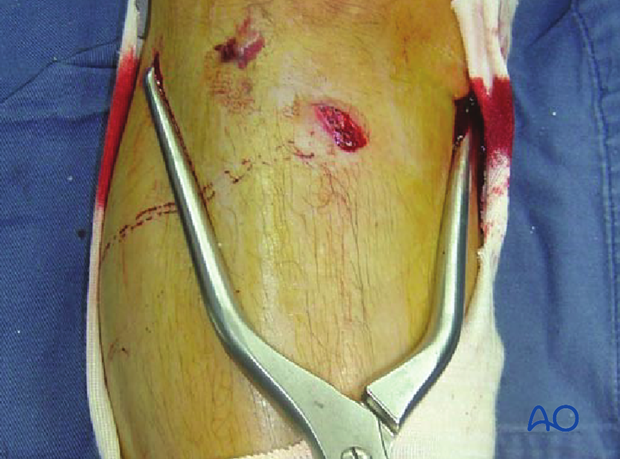
Pearl: clamp with plate
If you intend to keep the clamp on throughout the whole procedure it is best to slip the plate under the clamp prior to tightening the clamp to maintain reduction. Under these circumstances you determine which screw hole is best for the placement of the tip of the clamp from the pre-operative plan and intra-operative trial.
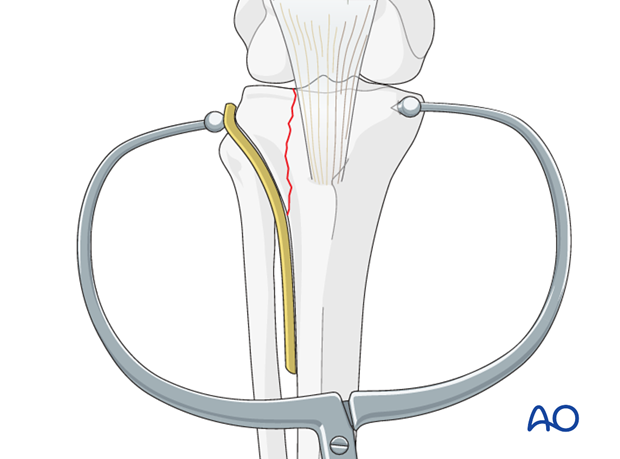
The plate is temporarily held in place with a K-wire and the clamp.
The positioning of the buttress plate is important as the ideal place is at the tip of the fragment and perpendicular to the fracture plane.
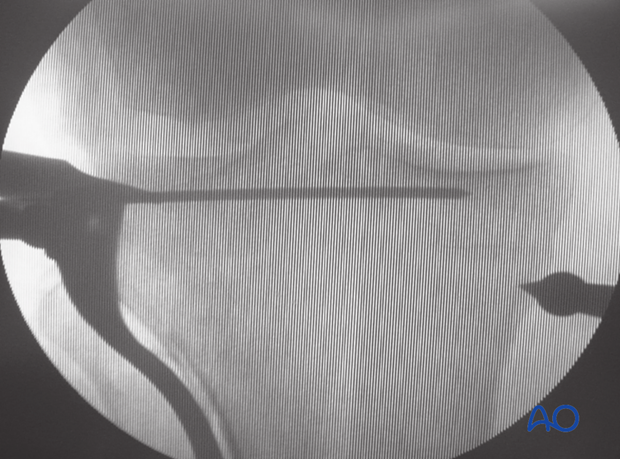
4. Fixation
Lag screw through the plate
The first lag screw should be inserted at 90° to the fracture plane. Thus it is best to insert the first lag screw outside the plate unless the fracture plane is oblique and parallel to the position of the plate. Under these circumstances, the lag screw can be inserted through the plate.
Click here for a detailed description of the lag screw technique.
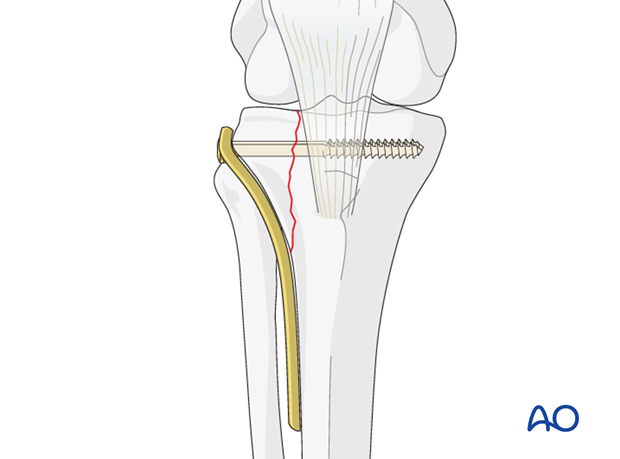
Additional screw insertion
The insertion of the subsequent screws follows your pre-operative plan. Please note that one can insert a second distal lag screw through the plate.

Alternative: lag screw outside the plate
If screw fixation has already been performed and you come now to apply a plate consider a slightly more distal placement for the plate.
In this x-ray, the lag screws were applied first.
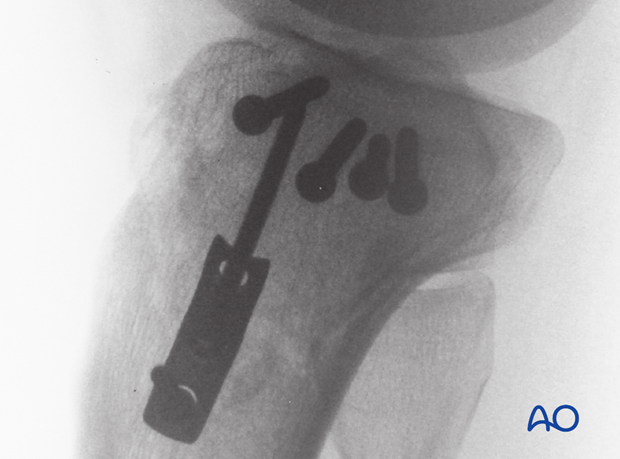
The short plate buttresses the fragment.
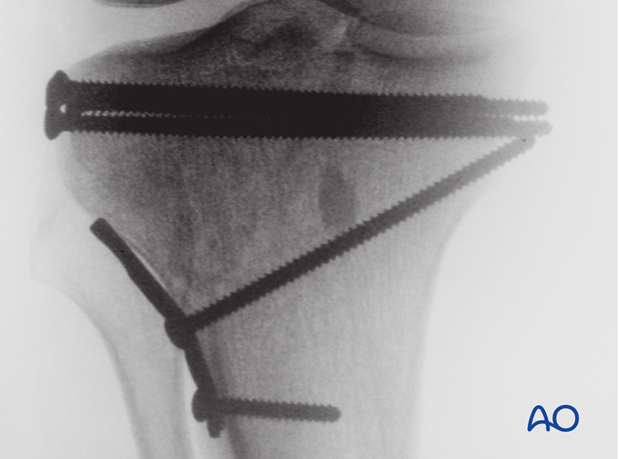
Oblique split fracture
Remember, that reduction and fixation of the medial plateau fracture, particularly if the fracture plane is oblique and runs antero-medial to postero-lateral may be much more difficult. Reduction particularly if the medial wedge fragment is further split in the coronal plane can only be achieved with the knee in extension. The position of the plate is determined by the direction of the principle fracture plane.
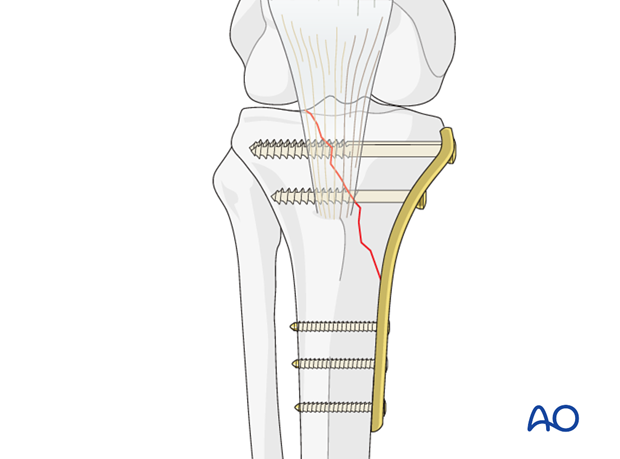
5. Aftercare
Compartment syndrome and nerve injury
Close monitoring of the tibial compartments should be carried out especially during the first 48 hours after surgery to rule out compartment syndrome.
The neurovascular status of the extremity must be carefully monitored. Impaired blood supply or developing neurological loss must be investigated as an emergency and dealt with expediently.
Functional treatment
Unless there are other injuries or complications, mobilization may be performed on post OP day 1. Continuous passive motion (CPM) splints are very helpful in the early phase of rehabilitation. Static quadriceps exercises with passive range of motion of the knee should be encouraged. Afterwards special emphasis should be given to active knee and ankle movement.
Following any injury, and also after surgery, the neurovascular status of the extremity must be carefully monitored. Impaired blood supply or developing neurological loss must be investigated as an emergency and dealt with expediently. The goal of early active and passive range of motion is to achieve as full range of motion as possible within the first 4 - 6 weeks. Optimal stability should be achieved at the time of surgery, in order to allow early range of motion exercises.
Weight bearing
No weight bearing in the treatment of articular fractures for a minimum of 10 – 12 weeks.
Follow up
Wound healing should be assessed on a short term basis within the first two weeks. Subsequently a 6 and 12 week follow-up is usually performed. If a delayed union is recognized, further surgical care will be necessary and should be carried out as soon as possible.
Implant removal
Implant removal is not mandatory and should be discussed with the patient.













